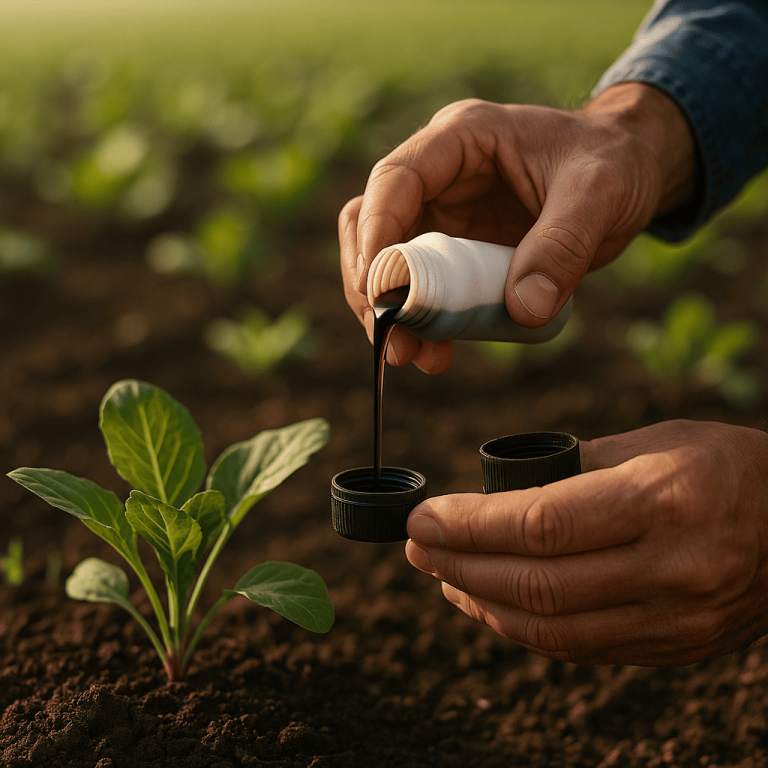Introduction
Healthy soil is the foundation of successful farming. Yet, over time, heavy cropping, improper irrigation, or excessive chemical use can weaken soil structure and fertility. Recognising the early signs of unhealthy soil can help you take timely action and protect your harvest. In this guide, we’ll explore how to identify when your soil needs help—and practical fertilizer solutions to restore its balance.
1. Poor Soil Structure: When the Ground Doesn’t Breathe
One of the first warning signs of soil trouble is poor structure. You might notice that your soil has become clumpy, crusted, or hard to till. Water doesn’t drain properly, and roots struggle to spread.
Causes:
- Over-tillage and erosion
- Lack of organic matter
- Heavy machinery use
How to Fix It:
- Apply organic fertilizers rich in humic and fulvic acids to rebuild structure.
- Incorporate bio-stimulants or compost to enhance soil aggregation.
- Practice reduced tillage and add mulching to retain moisture and structure.
2. Low Fertility: When Crops Look Weak and Pale
If your crops are showing slow growth, yellow leaves, or poor yields, it’s a sign of nutrient deficiency. Continuous cropping without replenishment often depletes key nutrients like nitrogen (N), phosphorus (P), and potassium (K).
How to Fix It:
- Conduct a soil test to identify nutrient imbalances.
- Use balanced NPK fertilizers or customized fertilizer blends based on soil test results.
- Apply micro-nutrient supplements (like zinc, boron, and iron) to correct deficiencies.
- Add organic matter or composted manure to sustain long-term fertility.
3. Soil Compaction: When Roots Can’t Breathe
Compaction occurs when soil particles are pressed tightly together, reducing pore space. This prevents air, water, and nutrients from reaching plant roots—leading to stunted growth.
Signs of Compaction:
- Water pooling on the surface after rain
- Shallow root growth
- Poor infiltration and drainage
How to Fix It:
- Use deep-rooted cover crops like legumes or grasses to naturally loosen soil.
- Apply liquid bio-stimulants that improve soil porosity and microbial activity.
- Avoid working on wet soil and reduce heavy machinery traffic.
- Add gypsum or organic conditioners to improve aeration and structure.
4. Acidic or Alkaline Soil: When pH Blocks Nutrients
Even when nutrients are present, the wrong pH can lock them away from your crops. Acidic soils (pH below 6) or alkaline soils (pH above 8) affect nutrient uptake and microbial activity.
How to Fix It:
- For acidic soils, apply agricultural lime or dolomite.
- For alkaline soils, use sulphur or acidifying fertilizers.
- Regularly monitor pH and adjust fertilizer application accordingly.
5. Declining Organic Matter: When Soil Loses Life
Organic matter is essential for microbial activity and nutrient cycling. If your soil looks dusty, lacks earthworms, or drains poorly, it may have lost its biological vitality.
How to Fix It:
- Incorporate compost, green manure, and humic-based fertilizers.
- Rotate crops and include legume cover crops to boost nitrogen levels.
- Apply liquid organic fertilizers to restore microbial populations.
Conclusion
Healthy soil isn’t built overnight—but with regular care and the right fertilizer solutions, it can thrive again. By addressing poor structure, low fertility, or compaction early, you set the foundation for sustainable crop growth and long-term farm productivity.
Call to Action:
Looking to restore your soil’s health? Explore our range of organic and bio-fertilizers designed to rejuvenate soil structure and fertility. Contact us today to find the right solution for your farm.






